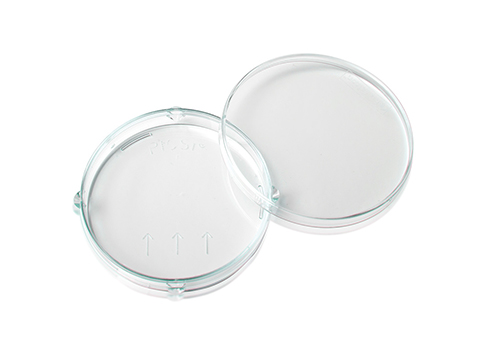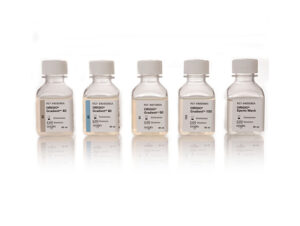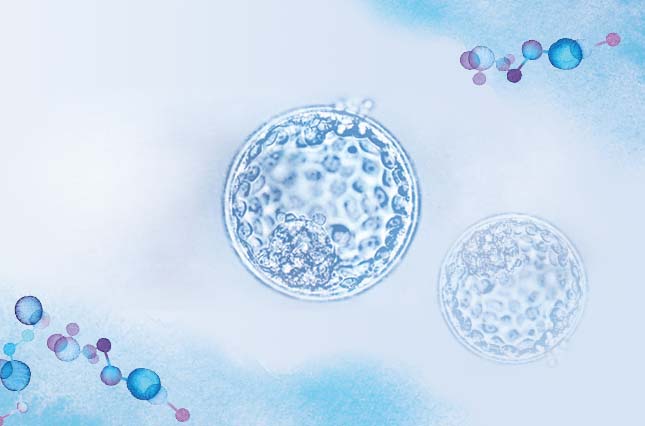Picsi® dish for sperm selection


The PICSI® dish with Hyaluronan microdots for easy sperm selection
The PICSI® dish is a dish for intracytoplasmic sperm injection (ICSI) with hyaluronan microdots, supporting the selection of mature spermatozoa with better DNA quality.1,2
- Supports the selection of mature spermatozoa with increased chromatin integrity, better DNA packaging, and reduced risk of aneuploidy.1-4
- Simple implementation into clinical practice.
- Easy and convenient to use.5
- Hyaluronan-based selection of spermatozoa for ICSI could be considered as part of the treatment plan for advanced age couples and patients with previous unsuccessful ICSI attempts.2,6
Clinical benefits of sperm selection with PICSI® dish:
- Significantly decreases miscarriage rates.7,8
- Improves live birth outcomes among older couples and helps to mitigate the poor prognosis usually ascribed to advanced maternal age.2
- May provide better treatment outcomes after previous failed ICSI cycles.6
Availability
This product is available for sale in Europe, the U.S.A as well as selected countries in the rest of the world.
Mimicking the natural sperm selection mechanism
Hyaluronic acid (HA) or hyaluronan is a naturally occurring organic polymer that is also a major component of the extracellular matrix of the oocyte-cumulus complex. During the natural fertilization process human oocytes are surrounded by hyaluronan, which is acting as a ‘‘physiologic selector’’ of spermatozoa.5
Only fully mature spermatozoa can bind to hyaluronan, as hyaluronan receptors appear on the plasma membrane during late spermiogenesis after the maturation-related plasma membrane remodeling. This is accompanied by the loss of the residual body via cytoplasmic extrusion, DNA repackaging from histones to protamines and zona pellucida-binding site formation.5 It was demonstrated that the ability of spermatozoa to bind to hyaluronan is correlated with sperm maturity, increased chromatin integrity, decreased chances of aneuploidy, lower sperm DNA fragmentation and better sperm DNA packaging4.
Indeed, immature spermatozoa that fail to undergo membrane remodeling have no receptors to hyaluronan and the zona-pellucida. They also demonstrate presence of residual cytoplasm, persistent histones, and increased risk of chromosomal aneuploidies and DNA fragmentation.3,4 Immature spermatozoa are unable to bind to hyaluronan and the zona pellucida and therefore would be excluded from the natural fertilization process.
During standard ICSI, all natural selection mechanisms are bypassed, and spermatozoa are selected based on their morphology and motility only.
Selection of sperm, capable to bind to hyaluronan for ICSI mimics the natural sperm selection process and is therefore often called “physiologic ICSI.” It was demonstrated, that “physiologic ICSI” using a PICSI® dish can reduce miscarriage rates,7,8 improve treatment outcomes among older couples,2 and patients with a low percentage of mature spermatozoa8 and after a failed ICSI attempt.6
How to prepare a PICSI®
How to perform sperm selection with PICSI® dish

The PICSI® dish is a polystyrene dish for ICSI with three microdots of hyaluronan attached to the interior bottom surface. There are three arrows pointing to the dots to facilitate their location.

Hydrate the microdots by covering them with ≈10μL drops of appropriate media.

Other drops, like PVP and drops for oocytes, can be added to the dish the way you prefer (the picture shows just an example of drop layout). Immediately cover the PISCI® dish with the appropriate amount of oil.

Add prepared spermatozoa to the edge of the hydrating media covering the hyaluronan microdots under oil. Motile sperm start swimming to the hyaluronan dot, and mature ones will bind to it.

Hyaluronan-bound sperm (green on the drawing) are easily identified: they exhibit no progressive migration despite vigorous tail beating. They can be easily picked up and transferred to PVP drop for immobilization.
Key publications that are supporting the clinical efficiency of sperm selection with the PICSI® dish
– improving your patient’s chances
By using the PICSI® dish, embryologists ensure that spermatozoa injected into oocytes have better chances to be mature and contain non-damaged DNA.5
Watch the Webinar with one of the authors of the biggest PICSI® dish study in the world to learn how sperm selection with a PICSI® dish can help older couples.
Mechanistic analysis of sperm selection with hyaluronic acid and treatment outcomes
By Professor Jackson Kirkman-Brown MBE PhD
Sperm selection with a PICSI® dish significantly decreases miscarriage rate compared to standard ICSI.7
In 2019, the so-called HABSelect study was published – a randomized controlled trial (RCT), that was carried out in 16 IVF centers across the UK, it included 2,752 couples and was supported by the UK National Institute for Health and Care Research. The study compared clinical outcomes of sperm selection using a PICSI® dish with conventional ICSI.
It was shown that the use of a PICSI® dish led to a significant decrease in the miscarriage rate compared to conventional ICSI, as shown below.
By using the PICSI® dish, embryologists ensure that spermatozoa injected into oocytes have better chances to be mature and contain non-damaged DNA.5
Parallel, two-group, double-blinded RCT, carried out in 16 IVF clinics in the UK on 2,752 couples undergoing ICSI or PICSI

Sperm selection with HA improves live birth outcomes among older couples and is connected to sperm DNA quality, potentially affecting all treatment outcomes.2
Results of the mechanistic part of the HABSelect study, published in 2022, demonstrated that the Hyaluronan-binding score correlated with sperm DNA quality, showing that sperm capable of binding to hyaluronan are more likely to have compact chromatin and intact DNA.
The authors also built a predictive model from aggregation of the original HABSelect trial data into 10-year intervals for male and female age. It was shown that older men and women randomized to the sperm selection using PICSI® dish group had the same live birth rates and same low miscarriage rates as younger patients, most likely due to avoidance of sperm with damaged DNA.
The modeled live birth and miscarriage data strongly suggest that sperm selection using a PICSI® dish particularly mitigates the poor prognosis usually ascribed to women of advanced maternal age.
Modeled, predicted live birth rate and miscarriage rate with female age following ICSI or physiologic ICSI using PICSI® Dish

HA sperm selection significantly improves the clinical outcome of couples with previous ICSI cycle failure6
A retrospective study of 167 couples with one failed ICSI attempt with low fertilization rates and poor embryos showed that cleavage rate, embryo quality, pregnancy and implantation rates were significantly higher in the group undergoing physiological ICSI with the PICSI® dish compared to conventional ICSI. The use of hyaluronan for sperm selection may provide better treatment outcomes after a previous failed ICSI cycles.
Clinical pregnancy and implantation rates with standard ICSI or physiological ICSI using PICSI® Dish following one previous failed ICSI
attempt characterized by low fertilization rate and poor embryo quality


ORIGIO® Gradients and ORIGIO® Sperm Wash
Advanced media with innovative formulation for sperm preparation. Support sperm motility and function and protect spermatozoa from oxidative and osmotic stress during preparation.
Learn More
HBA® Assay
For fast evaluation of the percentage of mature motile spermatozoa in semen samples.
Learn More
SpermSlow™ Media
For one step immobilization and selection of mature spermatozoa for ICSI without the use of PVP.
Learn MoreProduct codes
| Product | Order Code |
|---|---|
| 20 PICSI dishes, individually packaged, sterile | BCT-PICSI-20 |
Get In Touch With Us
We’d love to hear from you. How can we help?
Brochures, Catalogs & Flyers
Product Data Sheet
Product Data Sheet
Instruction for Use
Instruction for Use
Andrology Product Guide
Andrology Product Guide
White Papers
White Papers
- Yagci A, Murk W, Stronk J, Huszar G. Spermatozoa bound to solid state hyaluronic acid show chromatin structure with high DNA chain integrity: an acridine orange fluorescence study. J Androl. 2010 Nov-Dec;31(6):566-72.
- West R, Coomarasamy A, Frew L, Hutton R, Kirkman-Brown J, Lawlor M, Lewis S, Partanen R, Payne-Dwyer A, Román-Montañana C, Torabi F, Tsagdi S, Miller D. Sperm selection with hyaluronic acid improved live birth outcomes among older couples and was connected to sperm DNA quality, potentially affecting all treatment outcomes. Hum Reprod. 2022 May 30;37(6):1106-1125.
- Jakab A, Sakkas D, Delpiano E, Cayli S, Kovanci E, Ward D, Revelli A, Huszar G. Intracytoplasmic sperm injection: a novel selection method for sperm with normal frequency of chromosomal aneuploidies. Fertil Steril. 2005 Dec;84(6):1665-73.
- Huszar G, Jakab A, Sakkas D, Ozenci CC, Cayli S, Delpiano E, Ozkavukcu S. Fertility testing and ICSI sperm selection by hyaluronic acid binding: clinical and genetic aspects. Reprod Biomed Online. 2007 May;14(5):650-63.
- Parmegiani L, Cognigni GE, Bernardi S, Troilo E, Taraborrelli S, Arnone A, Maccarini AM, Filicori M. Comparison of two ready-to-use systems designed for sperm-hyaluronic acid binding selection before intracytoplasmic sperm injection: PICSI vs. Sperm Slow: a prospective, randomized trial. Fertil Steril. 2012 Sep;98(3):632-7.
- Scaruffi P, Bovis F, Casciano I, Maccarini E, De Leo C, Gazzo I, Massarotti C, Sozzi F, Stigliani S, Anserini P. Hyaluronic acid-sperm selection significantly improves the clinical outcome of couples with previous ICSI cycles failure. Andrology. 2022 May;10(4):677-685.
- Miller D, Pavitt S, Sharma V, Forbes G, Hooper R, Bhattacharya S, Kirkman-Brown J, Coomarasamy A, Lewis S, Cutting R, Brison D, Pacey A, West R, Brian K, Griffin D, Khalaf Y. Physiological, hyaluronan-selected intracytoplasmic sperm injection for infertility treatment (HABSelect): a parallel, two-group, randomised trial. Lancet. 2019 Feb 2;393(10170):416-422.
- Worrilow KC, et al. Use of hyaluronan in the selection of sperm for intracytoplasmic sperm injection (ICSI): significant improvement in clinical outcomes–multicenter, double-blinded, and randomized controlled trial. Hum Reprod. 2013 Feb;28(2):306-14.
Procedures
Want unlimited First line support?
All our USA and Europe Customers get free unlimited first line support with a service contract.
Support & Compliance
Our global team is committed to providing the highest standards of service and support.

Batch Certificates
Use this tool to enter your batch number and download the corresponding certificate of analysis.

Service
We offer a range of contract options to suit your needs: preventative maintenance and service, reliable access to spare parts, product training, and online handling of service requests.
Get In Touch With Us
We’d love to hear from you. How can we help?





